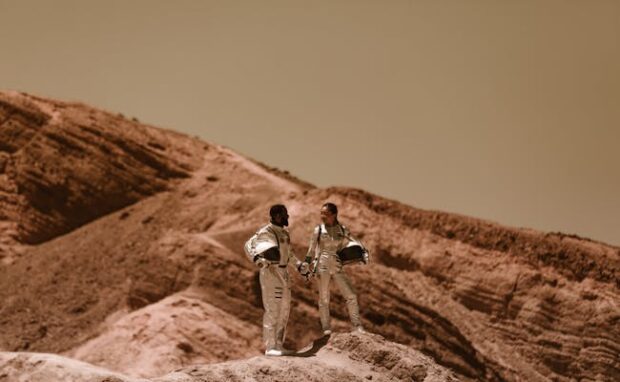NASA explains global asteroid alerts
Most disaster movies often involve a government person seeing an alert light glow or receiving a troubling phone call. Then, the staff rushes to a higher-up’s office to frantically explain an impending disaster, such as a massive asteroid heading toward Earth. Believe it or not, NASA has a similar system, but it is less dramatic and more systematic than the movies.
NASA’s Planetary Defenses Coordination Office (PDCO) identifies potentially dangerous asteroids and assesses their danger. Then, its group of experts will evaluate and verify its risks. Once all parties confirm the imminent danger, they will send an alert. However, contrary to popular belief, the PDCO doesn’t have the comical red phone from disaster flicks!
How will global asteroid alerts work?
Business Insider reported on NASA’s PDCO. The news outlet said it is “tasked with finding, tracking, and assessing the risk” of potentially dangerous asteroids in our solar system.
“We definitely want to find all those before they find us,” said Lindley Johnson, PDCO’s Lead Program Executive. NASA works with a global astronomer group called the International Asteroid Warning Network (IAWN) to achieve this goal.
If a hazardous asteroid is heading toward Earth, IAWN party members who noticed it first will share their observations across the IAWN network.
READ: NASA Bennu asteroid samples revealed
Then, the other experts will verify the findings and assess the danger. Once they agree that the Earth must brace for impact, NASA will send out an alert.
“I don’t have a red phone on my desk or anything,” Johnson said. “But we do have formal procedures by which notification of a serious impact would be provided.”
If the space rock will crash into the United States, NASA will notify the White House. Next, the government will release a formal public statement.
IAWN will alert the United Nations Office of Outer Space Affairs if the asteroid is an international threat.
ScienceAlert said an asteroid is “potentially hazardous” if it is larger than 460 feet across and intersects the Earth’s orbit at a minimum distance of 0.5 astronomical units. That is half the distance between the Sun and the Earth.
READ: Asteroid Day: Remembering how close they got to obliterating Earth
Moreover, NASA and IAWN search for new potential threats and monitor existing ones to compile findings at the Minor Planet Center.
IAWN found over 34,000 near-Earth asteroids at the time of writing. However, NASA needs at least five to 10 years of advanced asteroid alerts to prevent it from crashing into Earth.
Fortunately, the IAWN finds asteroids decades and centuries before they collide with our planet.
How will we live on Mars?

NASA envisions a future where we have people living on the Red Planet. That is why it invited the public to volunteer in its CHAPEA Mission 2.
A previous Inquirer Tech article reported that the Crew Health and Performance Exploration Analog or CHAPEA is a series of three ground-based experiments that study the effects of living and working on Mars.
Its ultimate goal is to send humans to the Red Planet in the 2030s. NASA will choose four crew members who will live in a 3D-printed Mars Dune Alpha habitat.
The simulation will be at NASA’s Johnson Space Center in Houston. It will mimic a Martian outpost’s conditions with limited resources, communication delays, equipment malfunctions, and other problems.
The participants will also perform various tasks like simulated spacewalks, crop growth, habitat maintenance, robotic operations, and exercise.
They will have to deal with the psychological and social issues of living with a small group for an extended period.
READ: NASA asks volunteers to live like a Martian in CHAPEA 2
The official website said NASA wants healthy, motivated US citizens or permanent residents aged 35 to 55 who don’t smoke.
Applicants must have “a strong desire for unique, rewarding adventures and interest in contributing to NASA’s work for the first human journey to Mars.
“Crew selection will follow additional standard NASA criteria for astronaut candidate applicants,” the website added. Volunteers should have at least one of the following:
- Master’s degree in a STEM field like engineering and math
- Physical or computer science degree from an accredited institution with two years of professional STEM experience or a minimum of 1,000 hours of aircraft pilot experience
- Two years of work toward a doctoral program in science, technology, engineering, and math
- Completed a medical degree or a test pilot program
- Completed military officer training or a bachelor of science degree in a STEM field with four years of professional experience